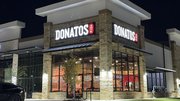News
Inventory is perishable cash
June 13, 2005
Whether one employee steals $20 from the cash register or another wastes $20 in food, it's all the same to the bottom line: a $20 loss.
"Inventory is cash, just in a different form," said Jim Laube, a former veteran restaurant operator who now operates training and education Web site RestaurantOwner.com.
The good news is that reversing inventory-related losses isn't that difficult. It just takes discipline.
Count it like cash
Luke Bailey, owner of the two-unit Pizza Company in Davison, Mich., keeps 10 to 14 days' worth of inventory on hand and schedules a running inventory only sporadically. "If I can keep 61 percent on food and payroll I'm OK," he said.
Laube, however, believes operators like Bailey would do better than OK if they:
- Conduct a daily inventory of eight to 10 key food items
- Keep no more than five to seven days' worth of food inventory
- Conduct a thorough physical inventory weekly
- Calculate food cost weekly
John Pronik, director of operations for Zabros Pizza Buffet in Mt. Pleasant, Mich., uses what he calls the toothpaste analogy to help his staff understand the need to keep inventory tight:
"You don't think about how much (toothpaste) you put on the brush until you get down to a quarter of a tube. Then you're wondering how long you can make it last," said Pronik.
"With inventory, we want to have enough on hand that we don't have to step on the tube to get out that last bit of toothpaste. But we never want to have overstock on the shelf, either."
Count the costliest items often
A successful dinner house chain Laube once worked with kept a keen eye on its most expensive food items, counting its steaks two to three times a day and comparing its findings with register tapes. Managers investigated variances immediately.
Spot inventory checks were done in full view of employees as well, which kept the staff mindful that a theft would be hard to pull off.
Ideally, Laube said, regular spot and weekly inventories will be compared with a profit-and-loss statement to render a weekly food cost. Calculating a weekly food cost allows operators to spot problems — such as waste or theft — sooner than if they waited until the end of the month.
Take time to count
Laube said he understands operators' claims that they lack time to do inventory as thoroughly as he recommends. But what amazes him most, he said, is operators who spend hours toiling to boost sales a percent or two, when they could boost profits a few percentage points by doing basic inventory management.
"As much as it seems like a pain, it's worth it," said Fremont, Mich.-based Spanky's Pizza president Michelle Burt, who believes better inventory management boosted her profits by 2 percent. When she got into the pizza business after college "I knew how to make pizzas and make customers happy ... , but I needed to know how to make more money on the bottom line. No question this helps."










